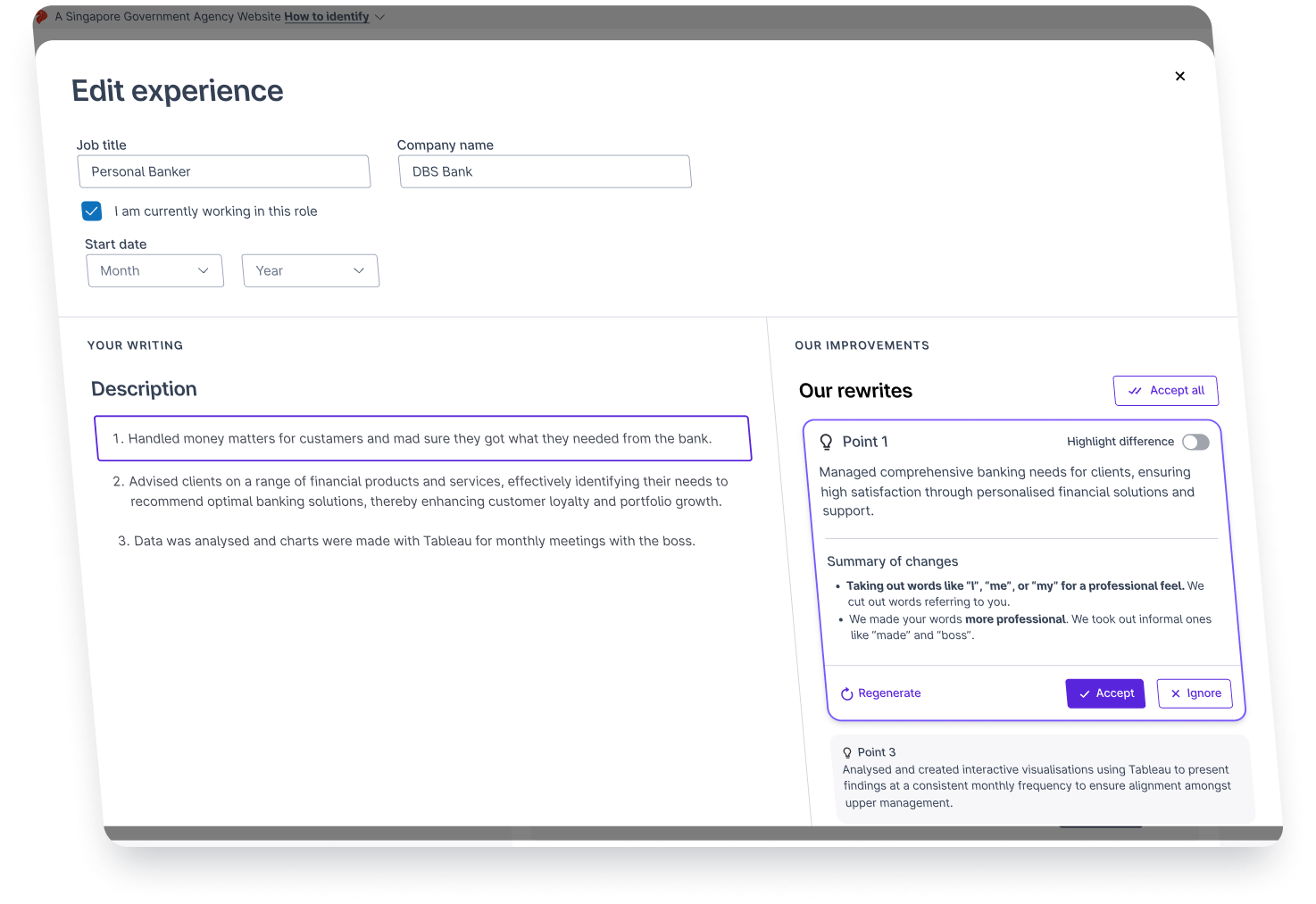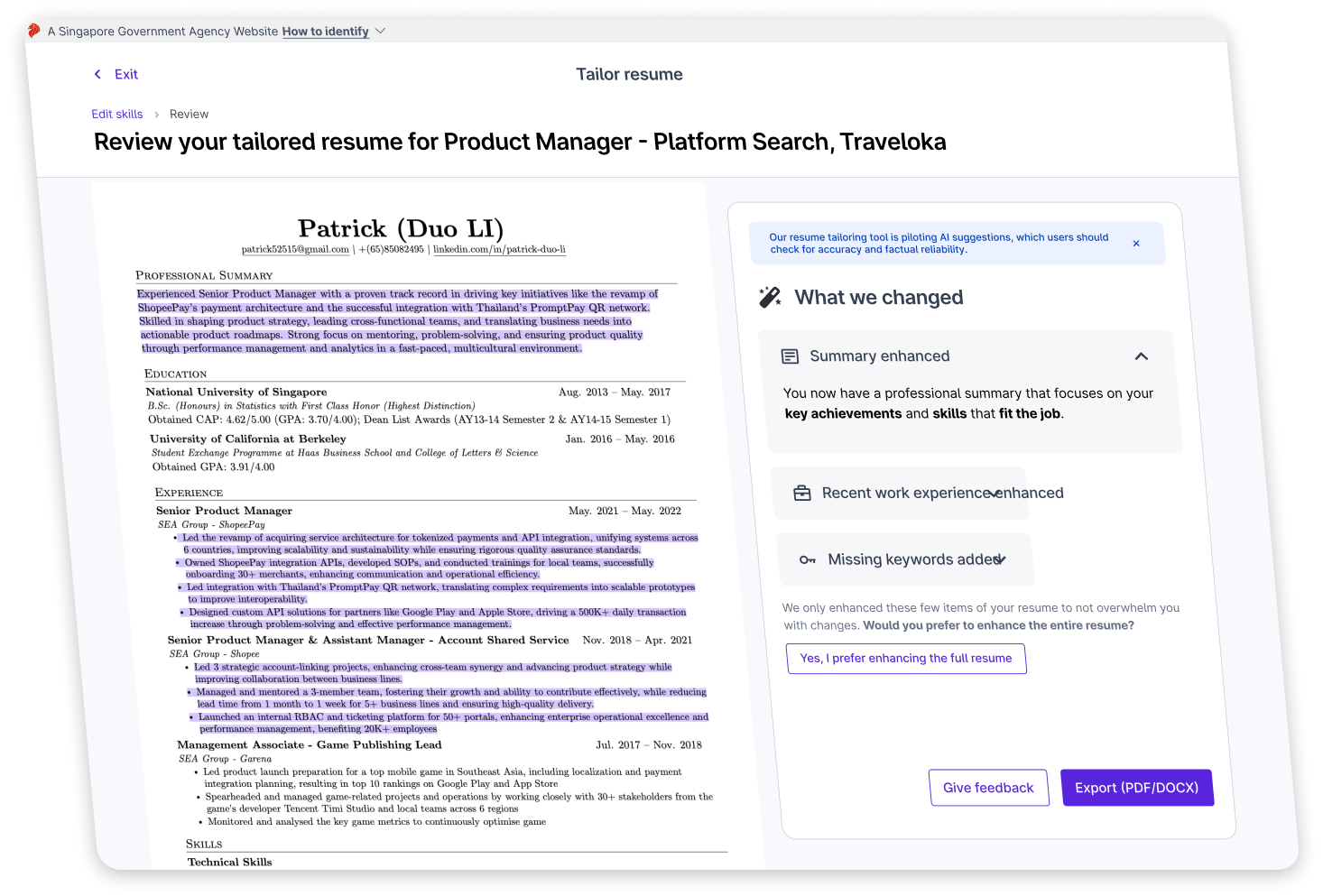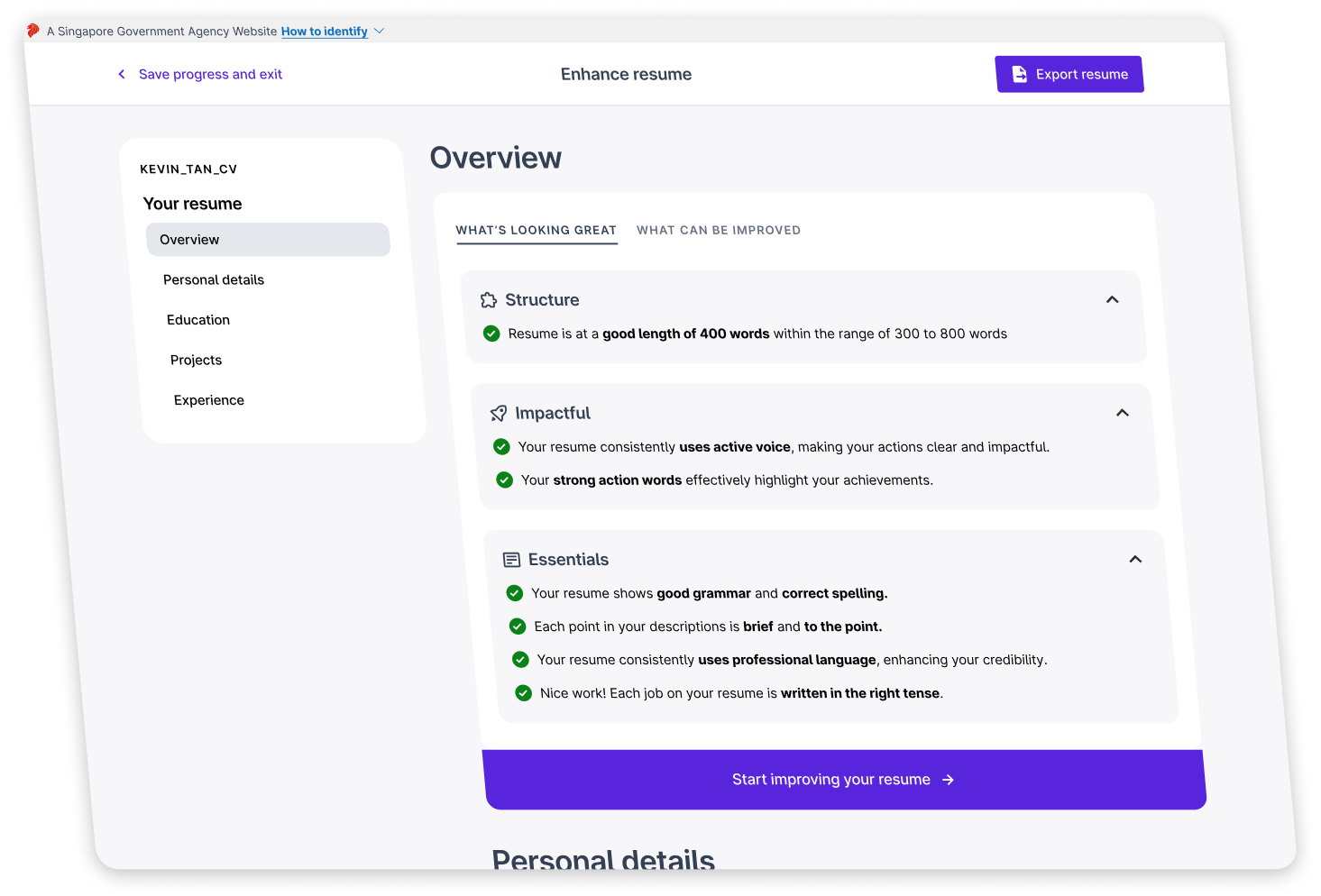ResumeBoost
Helping Jobseekers Improve Their Resumes with AI
Role
Sole Designer
Duration
0 to 1 in three quarters, plus one additional quarter to launch in MyCareersFuture (MCF)
Responsibilities
- Led end-to-end design process
- Conducted user research
- Created wireframes and prototypes
- Collaborated with engineering team
The Problem
Many jobseekers struggle to secure interviews, with this often being the primary bottleneck in their job search. This challenge is especially pronounced for career switchers, who may lack direct work experience in their target field and often struggle to present their skills effectively.
Project Highlights
Strong early traction with minimal marketing in first 2-3 months
Resumes processed daily after integration with MyCareersFuture
Total resumes analysed since launch, with continuous growth
Discovery & Research
To deeply understand the problem, we conducted generative discovery research with two key user groups:
- Career switchers to uncover their pain points in resume writing and job applications.
- Hiring managers to identify what makes a resume stand out and what evidence is needed to support candidate claims.
This initial research helped us identify the core challenges and opportunities for an AI-powered resume enhancement tool.
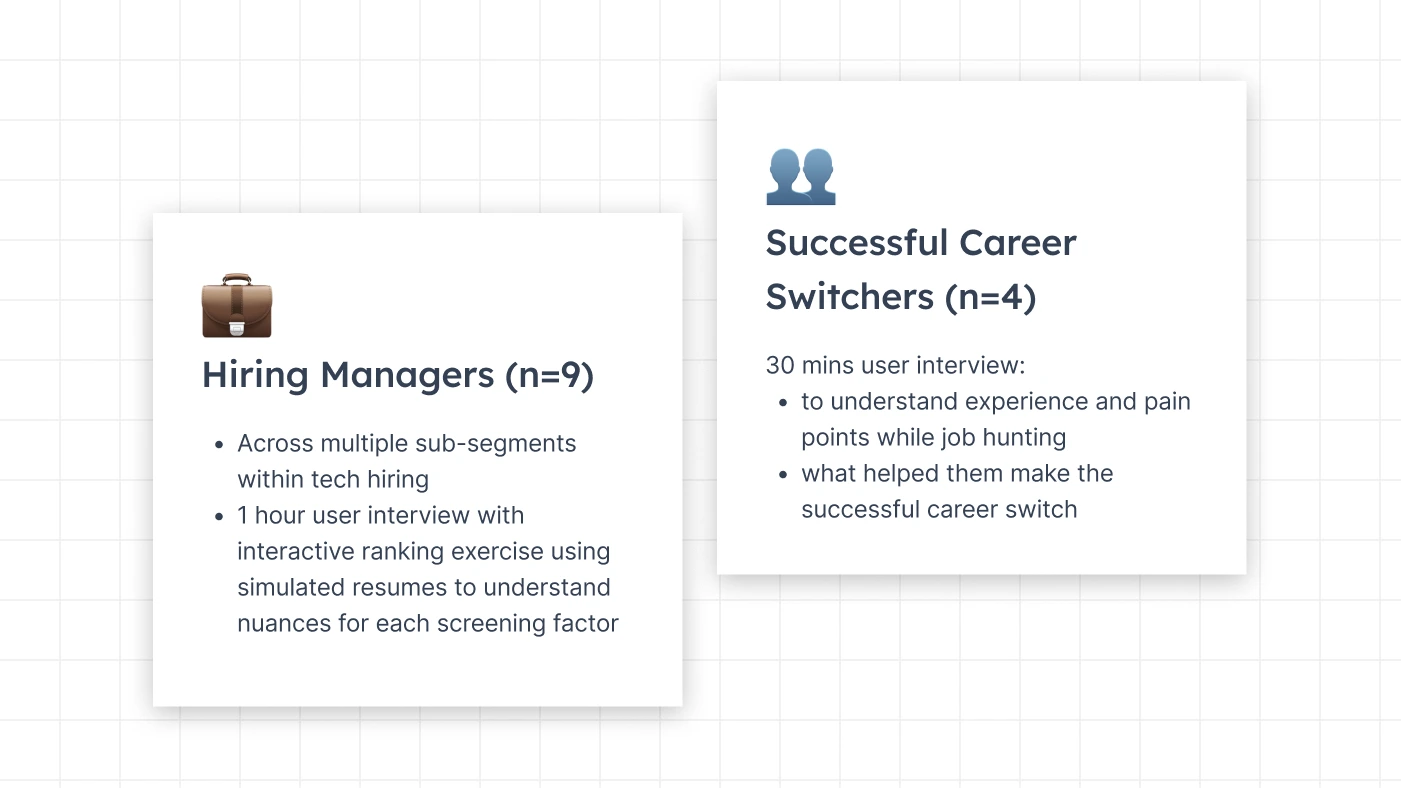
Our discovery research approach focused on both hiring managers and successful career switchers
Key Iterations
Simplified User Flow
Originally, the process involved multiple steps, making it cumbersome for users. Based on feedback, we streamlined it into a simple two-step flow:
- Upload resume
- Receive AI-powered analysis
This reduced drop-off rates and improved the overall user experience.
Refining the Rewrite Flow
Helping users rewrite their resumes effectively was a key challenge. Our iterations included:
- Initial Proof of Concept: A basic version that required users to click a button to get multiple options of AI-powered rewrites. However, doing this for each bullet point was too troublesome.
- Google Docs-style suggestions: Allowed users to receive rewrites as a series of google docs style suggestions they can accept and reject.
- Highlighting Changes: Many users struggled to identify what had changed in the rewritten version. To address this, we introduced a feature that clearly highlighted AI-generated modifications.
Scaling to MyCareersFuture (MCF)
After validating our approach in the standalone product, we worked with MCF to integrate these learnings into their platform.
- Usability Testing for MVP: Before launch, we conducted additional tests to confirm the approach and expose any usability gaps.
- Experimental Ground vs. Scalable Solution: The standalone product became a testing ground for new features, while MCF served as the scaled implementation for a wider audience.
Final Solution
The final solution we shipped in August 2024 included the following key features:
- Get an overview of how the resume is doing
- Receive bullet point level AI rewrites
- Export in an ATS friendly resume format in PDF
Subsequently, we shipped features to build on top of this including:
- An entirely separate flow to tailor your resume for a job description
- Multiple export formats
- More powerful rewrites to help users restructure their work description or even inspire them to write new things
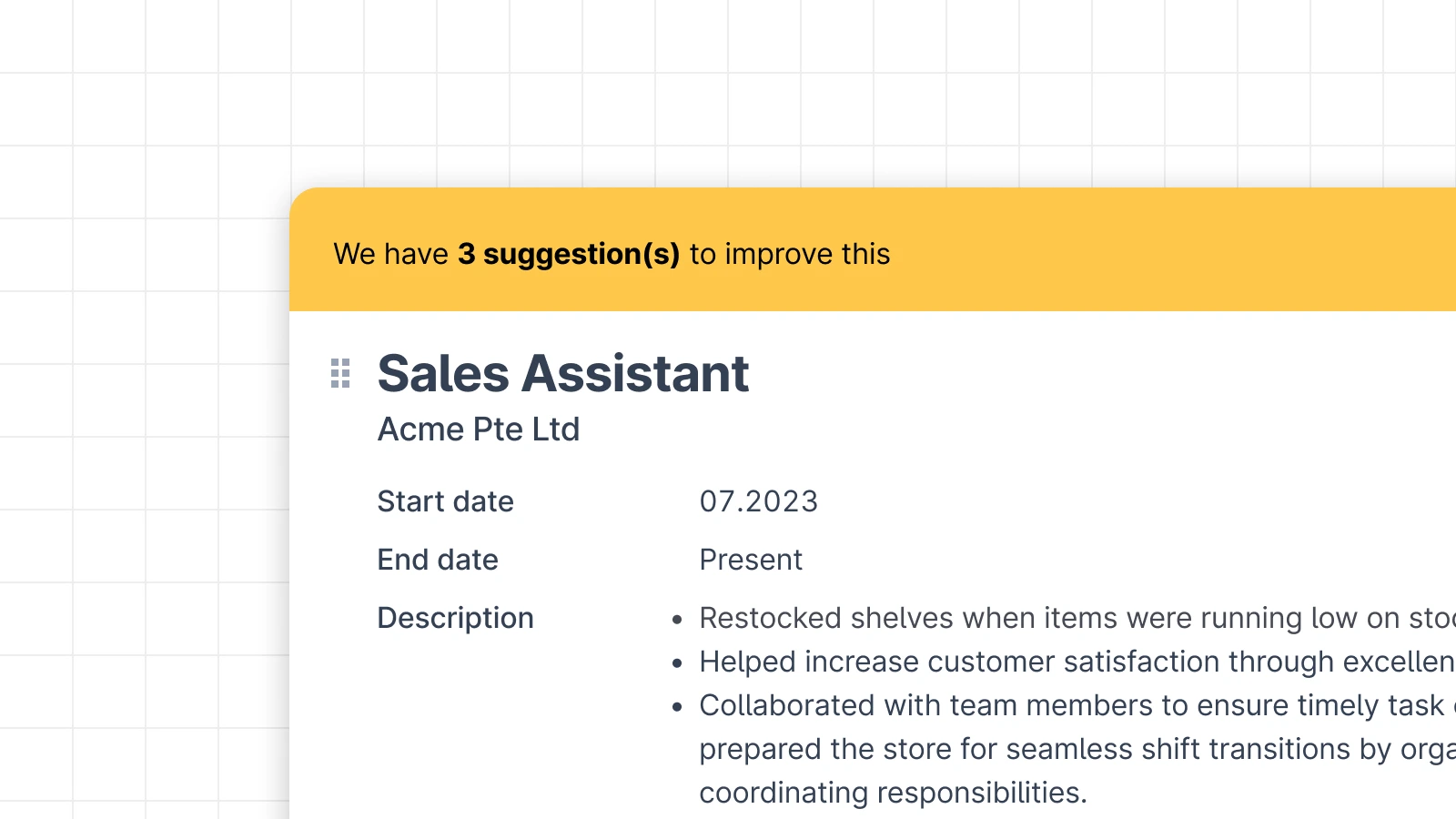
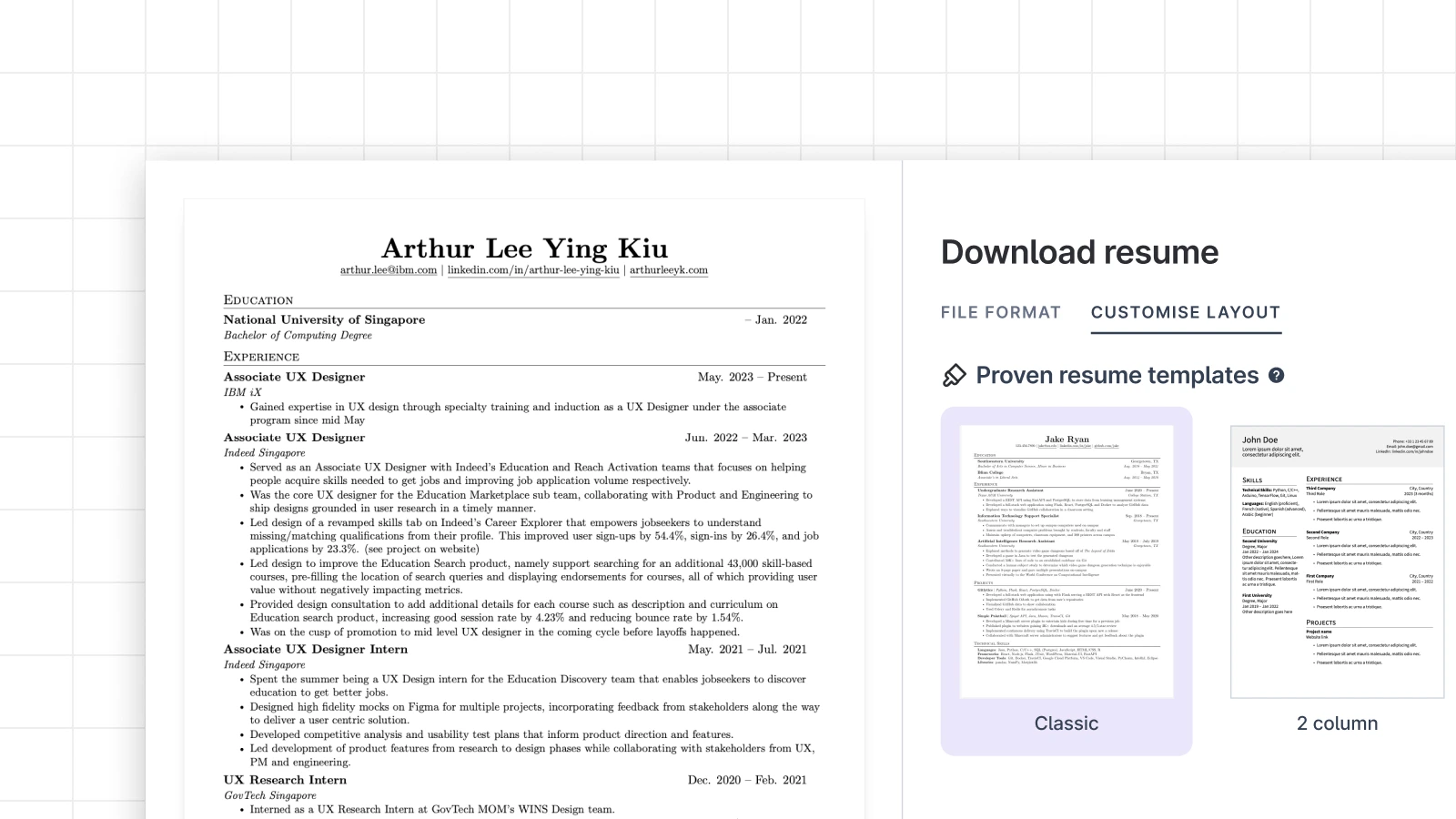

Outcomes
- 800 resumes analysed in the first 2–3 months with minimal marketing.
- 200+ resumes processed daily on MyCareersFuture after integration.
- 20,000+ total resumes analysed since launch, with continuous growth.
- Improved user engagement and feedback loops, shaping future iterations.
What Users Say
"The UI is very clean and fast. Suggestions for the points are very Singaporean human like. In fact I accepted most of the revisions! Much better than the chatGPTs I'm using at work"
"I like that the feedback is categorised by theme and everything is very clear with icons and bolded keywords so its easier to work on"
"Before that I only receive 1 or 2 but after this ResumeBoost I get quite frequent calls back as long as they have downloaded the resume the call back percentage is about 70%"
"I just wanna say I love the tool and amazing job!!"
Retrospective & Learnings
1. Start Research Earlier
Initially, we spent a lot of time having casual conversations with potential stakeholders and user groups but it went nowhere. We then took stock of our research and had issues defining what problem to solve. Only after doing that step did we decide a direction for the research. Immediately taking stock of the existing research and then executing on that earlier would have helped validate key assumptions sooner, reducing rework.
2. Coming up with a stronger unique selling point
As we continued iterating on the product, we began to reflect on how we, as a government initiative, could differentiate ourselves from commercial offerings. To explore this, I facilitated a visioning session with the team. While we eventually aligned on a unique selling point (USP), the direction faced challenges due to stakeholder concerns and operational constraints. In hindsight, raising this question earlier during the conceptual stage might have allowed for more productive alignment and reduced friction later on.
Final thoughts
This project demonstrated the power of AI-driven resume enhancement and how iterative design can improve jobseeker outcomes. It also reinforced the importance of early research, usability testing, and strategic scaling for broader adoption.
